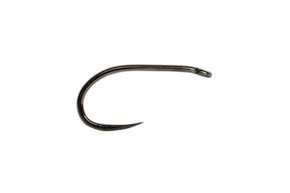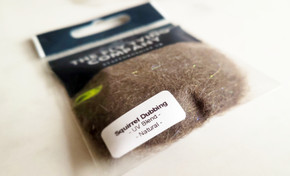Origin and History
Sedges (also known as caddis flies) are a vital food source for trout and grayling, hatching in huge numbers from late spring through autumn evenings. Traditional sedge patterns, such as the Green Sedge and Claret Sedge, have been used by UK anglers for over a century to imitate these fluttering insects. Whether tied as dries, emergers, or wet imitations, sedge flies are some of the most productive patterns on rivers, lochs, and stillwaters.
Materials (Green Sedge)
- Hook: Dry fly hook, sizes 10–16
- Thread: Green or olive 8/0
- Tail (Optional): Short fibres of cock hackle
- Body: Green seal’s fur or synthetic dubbing
- Wing: Natural grey or brown hen or duck quill fibres
- Hackle: Brown cock hackle, palmered
Materials (Claret Sedge)
- Hook: Wet or dry fly hook, sizes 10–14
- Thread: Claret 8/0
- Body: Claret dubbing (seal’s fur or substitute)
- Rib: Fine oval gold tinsel
- Wing: Hen pheasant or duck quill fibres
- Hackle: Brown or furnace cock hackle
Popular Variations
- Deer Hair Sedge – buoyant wing for rough water
- CDC Sedge – CDC fibres for improved flotation
- Emerger Sedge – trailing shuck to suggest hatching insect
- Silver-Ribbed Claret Sedge – extra flash for stillwaters
- Spent Sedge – flat wings for imitating dead sedges
Step-by-Step Tying Guide (Generic Sedge)
- Attach thread behind the hook eye and wrap a base to the bend.
- Tie in tail fibres if required (optional).
- Dub the body with chosen colour (green or claret), forming a tapered profile.
- Rib the body with fine oval tinsel for segmentation (Claret Sedge variation).
- Tie in a wing of matched quill or hen fibres, extending just beyond the bend.
- Hackle with brown or furnace cock hackle, 2–3 turns behind the wing.
- Form a neat head, whip finish, and varnish to secure.
Seasonality & Representation
Sedges hatch from late spring through autumn, with evening and dusk often being the most productive times. The Green Sedge is effective in June and July, while the Claret Sedge excels later in the summer and autumn. These patterns represent adult sedges on the surface, but wet versions can also imitate pupae ascending through the water column.
Tackle and Setup
- Rod: 9–10ft, 4–6wt
- Line: Floating line
- Leader: 9–12ft tapered, 4–6X tippet
- Setup: Fish singly on rivers, or in a loch-style team with other wets and bob flies
Summary Table
| Aspect | Details |
|---|---|
| Origin | Traditional UK sedge imitations, 19th–20th century |
| Best Seasons | Late spring to autumn |
| Represents | Adult sedges (caddis flies) |
| Hook Sizes | 10–16 |
| Tackle Setup | 9–10ft rod, floating line, 9–12ft leader |












